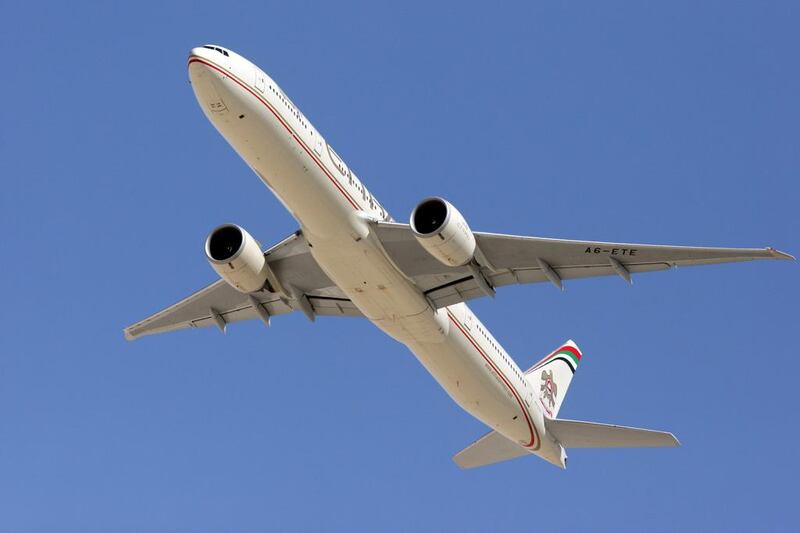Etihad Airways generated more than US$1 billion in revenues from passenger services for the first time in the third quarter.
Passenger revenue increased 10 per cent in the period to just over $1.03bn as passenger numbers passed 3 million.
Cargo revenue rose 39 per cent to $244 million as Eithad Cargo registered a 41 per cent increase in volumes during the period to 132,448 tonnes. Total revenue climbed 11 per cent to $1.4bn, compared with $1.3bn in the same period in 2012.
Revenue from codeshare and equity alliance airline partners stood at $247m, 36 per cent higher than a year earlier, while partnership contributions accounted for 23 per cent of total passenger revenue in the period.
James Hogan, the president and chief executive of Etihad, said the airline continued to develop its partnership strategy in the third quarter. "Headlining our partnership activities, we continued to work closely with regulatory authorities in India as we progressed our plans to acquire 24 per cent of Jet Airways, the first offshore investment in an Indian airline under the country's foreign direct investment legislation," he said.
”We signed an agreement with the government of Serbia to enter into a five-year contract to manage Serbia’s national airline, Air Serbia, currently trading as Jat Airways, and integrated its frequent flyer programme with our own Etihad Guest.
“We also increased our stake in Virgin Australia from 10.5 to 17.4 per cent, and launched partnerships with South African Airways, Air Canada, Belavia [the national airline of Belarus] and Korean Air, taking to 46 our number of codeshare agreements and expanding our virtual network to 375 destinations, “ said Mr Hogan.
The airline introduced one new route in the third quarter between Abu Dhabi and Sana’a.
It added three aircraft to the fleet in the third quarter, a new narrow body Airbus A320, one new wide-body Boeing 777-300ER and a leased Airbus A330. Etihad operated a fleet of 83 aircraft in the period, compared to 67 planes a year earlier.
In August, Middle Eastern carriers recorded the strongest year-over-year passenger traffic growth at 15.1 per cent, a figure that received a boost thanks to the timing of Ramadan in July.
However, the International Air Transport Association said it expected the trend to continue with August data showing “solid progress” in non-oil sectors in countries such as the UAE and Saudi Arabia.
gduncan@thenational.ae






